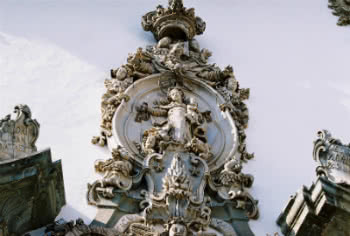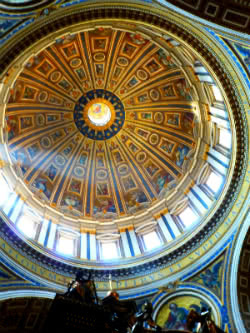THE baroque architecture it is among the main forms of manifestation of the Catholic religious counter-reform through art.
This demonstration is part of the Baroque movement, which began in Rome in 1600 and spread throughout Europe and Latin America.
In addition to its contribution to art, baroque architecture represented a true urban revolution.

St. Peter's Basilica is one of the most important expressions of baroque architecture
Baroque architecture was part of the Catholic Church's counter-reform movement in art. Among the objectives of the movement was the transport of the observer to the scene demonstrated.
This is why baroque architecture is mainly seen in churches, cathedrals and monasteries. This was to demonstrate the magnificence of Christian art.
There are also examples in private buildings, especially urban or rural mansions in a clear demonstration of religious thought.
Also at this time, parks and gardens were created to surround important residential buildings.
As a result of the arrangement of these buildings, urban reorganization begins to require planning that does not yet exist.
For Baroque architects, buildings were a kind of sculpture.
Main features
- Extravagance
- unusual and irregular
- use of movement
- proximity to the real
- Application of the curve as opposed to the static idea of buildings
- Churches from the Baroque period are marked by vaults, arches and buttresses.
- Attempt to make the observer imagine himself in infinity
- Theatrical scenographic effects
- Mixture of painting and sculpture
- light manipulation
Baroque Architecture in Brazil
THE baroque architecture from Minas Gerais it is observed mainly between the 17th and the first half of the 18th century.
In the same way as occurred in Europe, the Minas baroque also influences the development of urban planning.
The European influence, however, stayed at this point. The Minas Gerais baroque had its own characteristics, always obeying the religiosity imposed by the movement. Among the cities that most received this influence are Ouro Preto and Mariana, in Minas Gerais.
Among the examples of Minas Gerais baroque are the Church of Nossa Senhora do Carmo, in São João Del Rei, and the Church of São Francisco de Assis, in Ouro Preto.

Detail of the roof of the Church of Nossa Senhora do Carmo
Baroque Architecture in Italy
As it is considered the cradle of the Baroque, Italy exhibits several examples of the imposing architecture of the movement.
Among the most important architectural examples is the basilica of St. Peter. The work marks the transition between the Renaissance and the Baroque.
The urban configuration of the basilica was a mission given to Gian Lorenzo Bernini by Carlo Maderna after Michelangelo's death.
The facade of the basilica is 320 feet wide by 150 feet high. There are eight columns at the entrance. Bernini added a tower on the façade previously designed by Maderna and increased the actual height of the composition.
Bernini has also enhanced the effects of the Michelangelo-designed dome, installed galleries and an oval courtyard that feels larger than it actually is.

Dome of St. Peter's Basilica
Read too:
- Baroque
- Baroque style
- Baroque art
- Baroque painting
- Baroque Sculpture
- Exercises on Baroque

